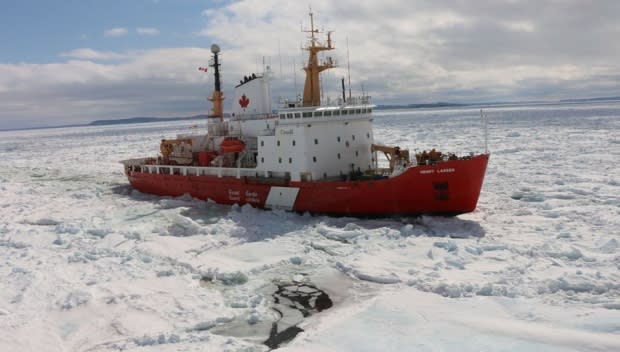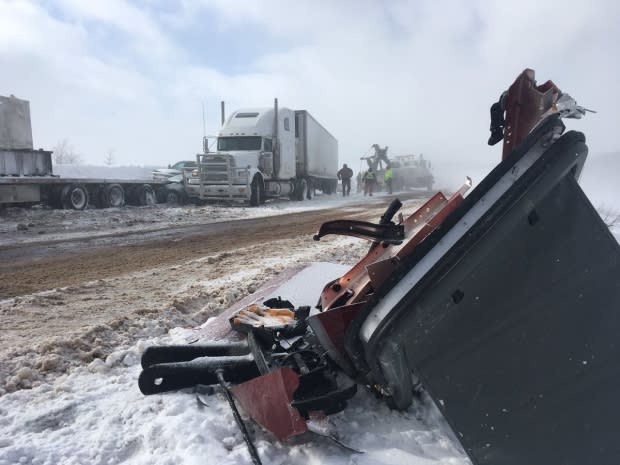Winter weather making for tough travels by land or sea in N.L.
Anyone headed out for a journey this winter in Newfoundland and Labrador, whether by sea or on land, should be packing extra supplies and loading up on patience. According to people in the know, the season has so far proven to be a particularly challenging one.
"We're in for a hard ice year, according to what we're seeing," said Brad Durnford, a superintendent with the Canadian Coast Guard, which oversees three icebreakers in the Western Newfoundland and Gulf of St. Lawrence areas.
Those icebreakers have been called into action earlier than normal thanks to an icy December, said Durnford, and conditions have not yet even neared their peak, which he estimated is still a solid three to four weeks away.
Durnford said in terms of ice amounts, 2019 is nearing the 30-year average mark, a significant milestone after a decade or so of notably lower levels of winter sea ice.
"It's quite significant, and we're seeing the effects all around the island now, right from Bonavista Bay, right around to Port aux Basques and all in the Gulf of St. Lawrence as well," he said, noting an icebreaker was called in to help on the ferry run to Fogo Island Thursday for the first time this season, while the CCGS Henry Larsen has been a near-constant companion on the Qajaq W's run across the Strait of Belle Isle.
That continual presence hasn't always helped the Qajaq W complete its crossings, as Durnford detailed conditions in the strait — "almost like a wall of ice" — that challenged the Henry Larsen's abilities. That, combined with westerly winds, has put a lot of pressure on the St. Barbe side of the crossing, forcing the ferry to stay in port for days at a time.
The bright spot so far has been the Cabot Strait, which also has an above-average amount of ice, but which Durnford said is mostly staying in the middle of the strait, allowing Marine Atlantic ferries to still cross fairly easily.
Highway pileups, and best practices
Bright spots aren't as easy to find during blizzards, like the snow squalls that blew through Western Newfoundland on Monday and contributed to a 15-vehicle pileup on the Birchy Narrows section of the Trans-Canada Highway.
One of the responding officers at the scene's aftermath said even high-visability vests and flashing police lights were no match for the weather conditions.
"It was nasty at times," said Const. Derek Hayden of the RCMP's Traffic Services.
"We couldn't even see at times each other, and we were only 10, 15 feet away from each other."

Hayden said weather conditions were a different story just east and west of the scene, with fairly clear driving, and perhaps a little patience would've gone a long way as the snow squalls came and went.
"Be prepared to stop and wait, 'cause there was breaks in the weather where you could've crossed and seen through. And there was times when you couldn't see across," he said.
But whatever you do, or how bad it gets, never come to a complete stop in the middle of the road, said Hayden. Drivers should either flick on their hazard lights and continue to crawl along, or pull over to the side and wait for conditions to clear.
Keep car stocked
People had to spend hours in their cars at the scene as first responders sorted through wreckage — with luckily no fatalities, although six people were sent to hospital — but that wait time reinforced one of Hayden's biggest winter driving tips.
"If the weather is cold and stormy outside, have that clothing in your vehicle. Have blankets in your vehicle," he said.
"If weather is a big factor, the safest spot for you is in your vehicle."

He also warned against relying on daytime running lights, which don't light up tail lights that help signal a slowdown to drivers behind you. And even if the tail lights are on, a snow squall can cover them up.
"When you stop for fuel, when you stop for a coffee, just get out and take that 10 seconds to wipe off your tail lights, wipe off the back of your vehicle, so the person coming up on you can see your vehicle."
Read more articles from CBC Newfoundland and Labrador

